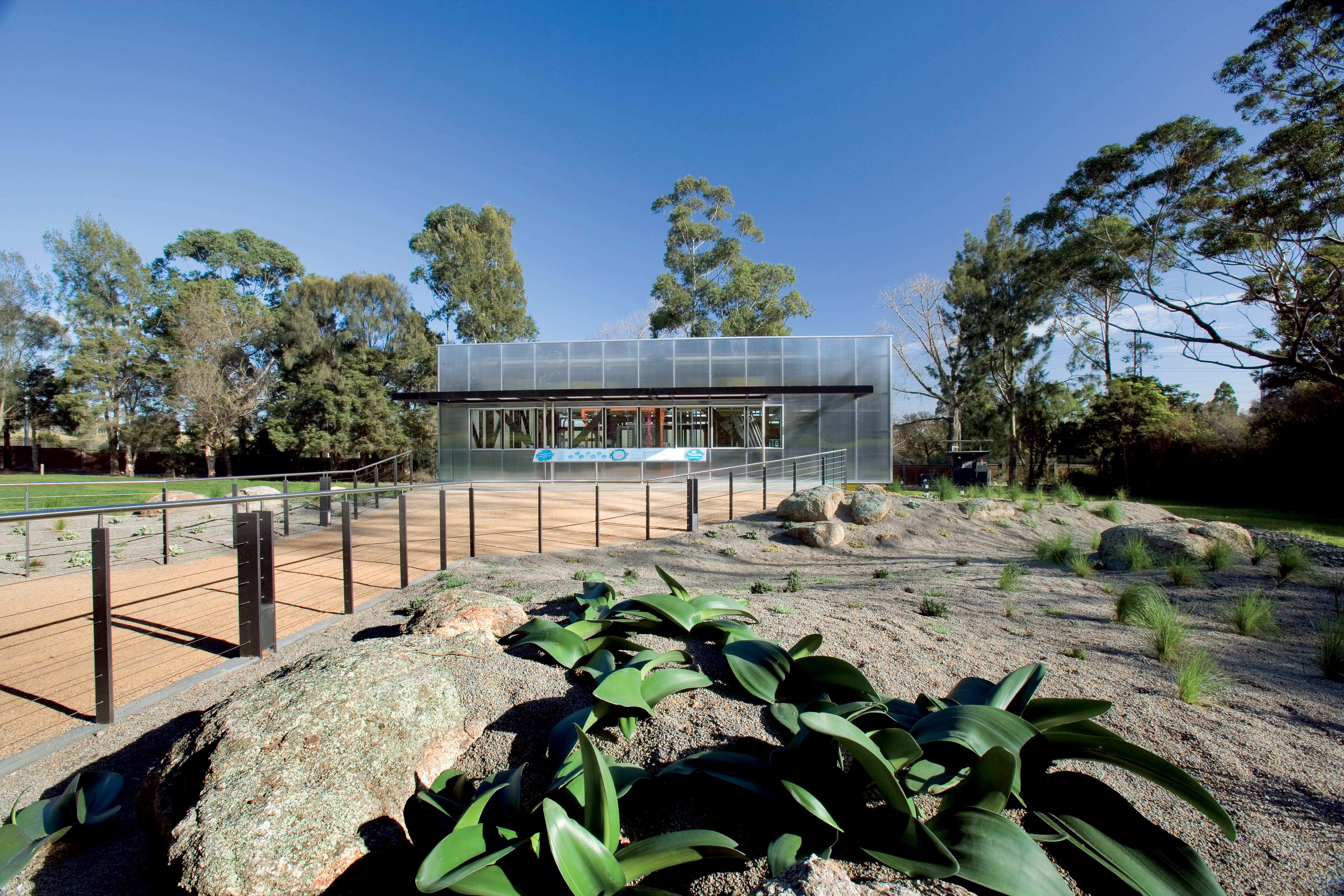Water saving at Melbourne Zoo, naturally

The oldest zoo in Australia, the Royal Melbourne Zoological Gardens, which opened in 1862, has implemented a long-term modernization program that includes a radically redesigned plumbing infrastructure at its Parkville, Victoria site.
As a result, several animal enclosures have been rebuilt along with enhancements to the landscape and botanical setting in an effort to curb the site’s water usage.
In the early 1990s, the Melbourne Zoo used more than 1,000kL of potable water each day, averaging 570,000kL every year. This prompted the introduction of a series of water-saving initiatives including the placement of re-circulating pumps and filters in ponds, decommissioning old leaking pools, installing modern irrigation systems, fitting toilets with dual-flush cisterns, and building a new multi-million dollar water recycling centre.
Designed by Peter Elliott Architecture + Urban Design, the centre accommodates a water recycling plant that answers the demands of a drought-stricken environment with tough water restrictions.
The plant captures and treats wastewater from rainfall and zoological operations then pumps recycled water around the zoo through 2.5 miles of piping infrastructure. Since it was commissioned in May 2005, the plant has produced 50,000kL of Class A water for reuse throughout the zoo.
“The water recycling project was implemented to resolve a long-term waste water discharge problem as well as improve water conservation practices,” says Elliott, who was the principal design architect on the project, which commenced in July 2004 and was completed in June 2006.
The total project value was $US3.25 million, with $280,000 spent on the building component alone.
“The zoo resolved in consultation with the EPA, Melbourne Water and the City of Melbourne to recycle and reuse storm water via an on-site water recycling plant. The new plant exemplifies Zoos Victoria’s commitment to sustainable practices and the environment.”
The zoo’s entire storm water drainage system, including animal wash-down areas, converges at one point of discharge at the northern end of the site. A diversion weir has been constructed at that point with a baffle that diverts dry weather run-off together with first-flush wet weather to the water recycling plant. The water is stored in two large underground concrete holding tanks – one 750kL raw water tank and one 145kL treated water tank.
All storm water and effluent captured from the wash-down of the animal enclosures is stored in the raw water holding tank and collected by the second tank once the plant has monitored and adjusted the Ph and chlorine levels, conductivity and turbidity of the pre-treated waste water.
The harvested water is recycled to Class 3A1-quality by a sophisticated reverse osmosis process. The recycled water is then redistributed throughout the zoo for use in ponds, animal hose-down areas and for landscape irrigation as part of a water management program.
“The water recycling plant has been designed to be experienced as a working exhibit,” Elliott says.
“The building is a compact 129ft² translucent cube set in an open landscape accessed via a public viewing platform. Placing the large water storage tanks underground has reduced the impact of the plant since they are buried into the landform with grassed roofs.
“The interior of the building is packed with equipment connected by a three dimensional maze of color-coded pipe work. A large picture window allows visitors to view the operation of the plant, which forms part of the interpretive display. At night the building glows like a shimmering lantern revealing the skeletal silhouette of the working interior.”
Elliott says it is a modest building with very particular functions, driven by the engineering requirements.
“The task was to create an interesting architecture from limited means to both house and show the working of the plant. The architecture came after the engineering as the specific footprint and volume of the building were already established by the design of the plant.
“The concept for the building was to create a light-filled box sitting on a robust base made from systemized steel and acrylic components. Color and light has been used to enliven and heighten various components of the building.”
The recycled water is used for exhibit cleaning, some pool filling, and lawn and landscape irrigation; the plant nursery also uses recycled water for all irrigation.
From January to September 2007 the plant produced 28,000kL of recycled water, which equates to 110kL per day, or almost one third of the zoo’s daily water demand for this period.
As a result of the upgrade, the zoo’s average daily water use has more than halved, with only 380kL of potable water being used each day in 2007.
